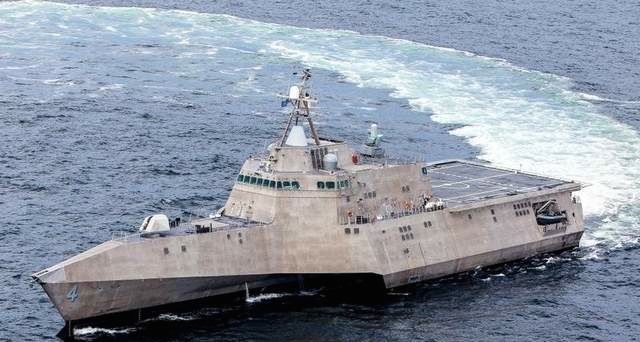Marine Official To Helm Navy’s Littoral Combat Ship Panel
Posted on

Defense Secretary Chuck Hagel has told the Navy in no uncertain terms that he wants a second opinion on the controversial Littoral Combat Ship. Perhaps that’s why the newly formed “Small Surface Combatant Task Force” won’t be led by a sailor or even a Navy civilian. Instead, the “SSCTF” chairman will be Marine Corps Systems Command director John D. Burrow, according to a memo the Navy released today.
Burrow isn’t as unfamiliar with surface ships it might seem. While he now focuses on Marine Corps ground force equipment in his current job, he spent years working on surface ships at Naval Sea Systems Command. That included a stint as technical director on the DD-21 program, which later evolved into the DDG-1000 Zumwalt-class destroyer. The DD-21/DDG-1000 was at least as controversial in its time as LCS, albeit for opposite reasons. DDG-1000 was deemed too big, complex, and costly, and the Navy stopped production at three ships, while the Littoral Combat Ship is derided as too small and fragile. (Cost overruns were a big issue early on but the price per LCS is now down to about $400 million, making it less than a quarter of the cost of the Navy’s workhorse DDG-51 Arleigh Burke destroyer). The problem both programs have in common is that they tried to cram a lot of high-tech innovations into a single revolutionary vessel without necessarily thinking through how it would work, either technically or tactically.
That’s why Hagel ordered the Navy to review alternatives to the Littoral Combat Ship and not to contract for any more LCSs after No. 32. That’s less draconian than it sounds because only 24 are currently in service or on order, so Hagel still gives the Navy at least eight more ships. (That said, the Navy’s plan was to order another 28, for a total of 52). Burrow & co. must report back by the end of July. That way their recommendations can inform the budget request now being built for fiscal year 2016, when the Navy would have to decide to order more Littoral Combat Ships or not.
According to the Navy memo, dated March 13, Burrow will lead a committee of seven Navy captains and one civilian, drawing members from both the requirements side of the service – the OPNAV staff in the Pentagon – and the acquisitions side – NAVSEA. They’ll report to a group of admirals and senior civilians co-chaired by enthusiastic LCS proponent Rear Adm. Thomas Rowden on the OPNAV side, and by the Deputy Assistant Secretary of the Navy for Ships, Allison Stiller, on the acquisition side.
(Our Navy Times colleague Christopher Cavas notes that no one in either group is from Navy Surface Forces Command. Whether it’s some kind of rebuke to SURFOR or a weird coincidence, we don’t know).
The Small Surface Combatant Task Force’s charter is to look at a range of alternatives, from all-new designs to existing ships. Both Navy Secretary Ray Mabus and Chief of Naval Operations Adm. Jonathan Greenert have repeatedly emphasized the fact that Hagel has by no means taken LCS off the table. To the contrary, both Hagel’s memo and this new one specifically mention the option of “modified LCS design.”
In fact, given the time and cost required to develop an all-new ship, a souped-up LCS may be the only practical option. The only other near-term options seem to be a military variant of the Coast Guard’s National Security Cutter or a foreign frigate, which even if license-built in the US would raise all sorts of patriotic hackles on Capitol Hill. Those are the choppy waters Burrow has to navigate.
Subscribe to our newsletter
Promotions, new products and sales. Directly to your inbox.
